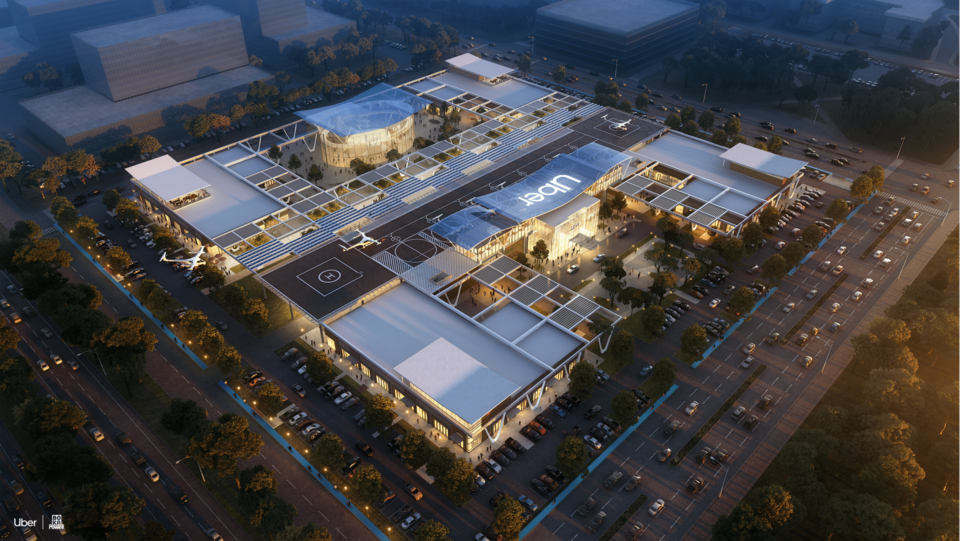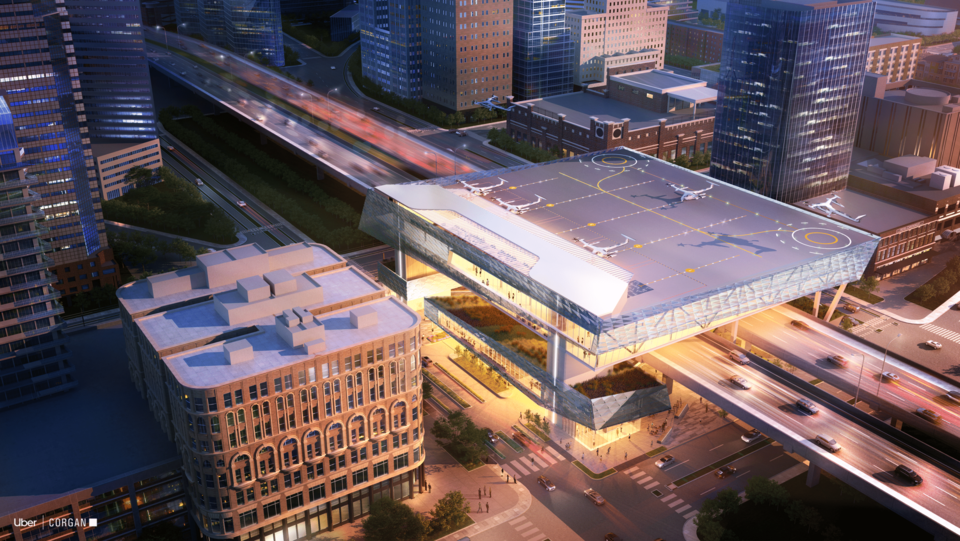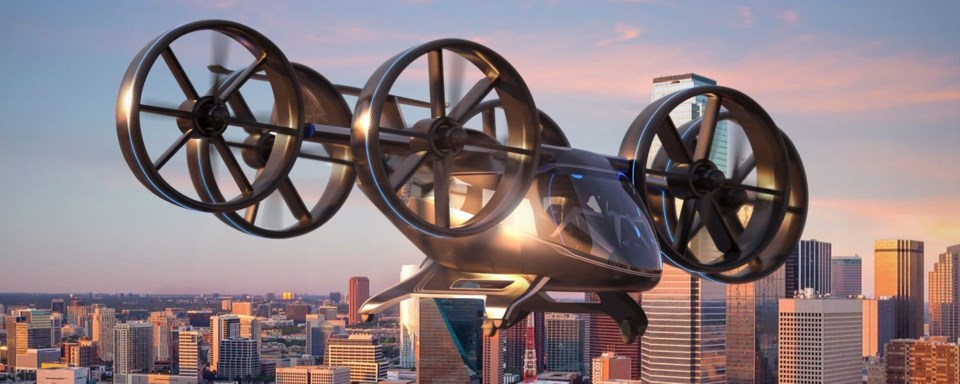
In the classic Back to the Future franchise, Marty McFly and Doc Brown traverse time in a flying, souped-up DeLorean. America was intrigued; for their time, the movies were revelatory showcases of special effects, and to this day, movie fans of all ages reference the franchise’s characters and quotes. The prospect of time travel still seems like the stuff of Hollywood make-believe, but the franchise’s second film predicted we’d have airborne skateboards, self-tying shoes and flying cars by the year 2015 and, well, it wasn’t too far off.
In 2018, Nike unveiled heinously expensive self-tying shoes that were originally available for $720, and can now be had for $350. Hoverboards are now available at retailers like Target and Amazon, and even though they don’t hover, they still give you a glimpse of what it might feel like to be Marty McFly, running—er, hovering—from the bully Biff and his gang. All that’s left is the flying cars, which has been an American dream as far back as the Roaring ‘20s, when Popular Science first mentioned the possibility in its October 1926 issue. Thanks to a collaboration between Uber, Hillwood, and an assortment of tech companies and venture capitalists, that dream may become a reality—and Frisco may become one of the first cities to offer travel via flying car.
A helipad was constructed at Frisco Station in 2019, and the Hillwood brass expect test flights to start taking place in June 2020.
“Five years from now, we’ll be flying something around Frisco,” Hillwood VP Russell Laughlin says.
Hillwood’s journey to this elevated stage stretches further back than the 1989 release of Back to the Future II. And while flying cars will be a thing of the not-so-distant future, getting living, breathing humans inside those cars is a completely different matter.
Looking past the COVID-19 crisis, Frisco has a bright future. To tell its story, we have to go back to the past. Specifically, we have to go back to 1988, when Ross Perot, Jr. was emerging from his father’s shadow and leaving an enviable legacy of his own.
The Past
In the climax of Back to the Future II, Marty McFly finds himself in an abandoned field. While rain pours down on our hero, a Western Union courier pulls up behind him, carrying a letter from the future.
As far as we know, Ross Perot, Jr. could not time travel. But the son of one of America’s most legendary tycoons was undoubtedly looking toward the future in 1988. As he stood in a field in Fort Worth, Perot, Jr. began to map out what would become Alliance Airport. If his father had conquered the computer world, Perot, Jr. would conquer the skies. As a 23-year-old, he became the first man to fly around the world in a helicopter. Now, at 29, his company Hillwood was going to open the world’s first industrial airport.
Alliance put Hillwood on the map. Perot, Jr.’s real estate company would become one of the country’s foremost developers of industrial, commercial and residential real estate. Its other crown jewel is AllianceTexas, a 26,000-acre community that includes Alliance Airport, the world’s first industrial airport. In many ways, Frisco Station is a throwback to AllianceTexas. While the latter dwarfs the former (Frisco Station is 242 acres) both were founded to be trailblazers.
“As real estate developers, we focus on things that are five to ten years ahead of us,” Russell Laughlin says. As Hillwood’s Executive Vice President, Laughlin jumped at the chance to reminisce about the company’s past and—like a slightly less harried, way more Southern Doc Brown—look boldly toward the future.
AllianceTexas was all about infrastructure: air, rail, and highway. Laughlin called it a community, so of course there would be homes. But at its heart, AllianceTexas (also known as Alliance, Texas) was a city of tomorrow. Laughlin says it’s only natural for Hillwood to continue to build more cities of tomorrow—or, in this case, turn existing cities like Frisco into hubs of futuristic innovation.
“If you’re asking how a real estate developer ends up in a space with air taxis, well, that’s always been part of the plan,” he says.
They just needed a partner—or, more specifically, a few partners—to get it done. Enter Uber.

The Present
Before (well, technically after) he finds himself standing in a rain-soaked field circa 1955, a wide-eyed Marty McFly walks around a futuristic Hill Valley in the year 2015. As flying cars whizz above him, hoverboards, criminally bad haircuts, and other neon-soaked signs of the future fill the screen. This scene from Back to the Future II is kind of how it feels to be at an Uber Elevate summit.
Uber has held three such summits—one in Dallas, one in Los Angeles and one in Washington D.C.—since announcing UberElevate in October 2016. That announcement promised cars would be in the sky by 2023, which would mean the Back to the Future filmmakers were only eight years off. Not bad.
The UberElevate initiative depends on “air taxis,” also called VTOLs, an acronym for vertical take-off and landing aircraft. They are unmanned, which incited predictable uproar from critics who have long derided Uber for gutting the American taxi industry. Other critics cautioned folks who were already dreaming about flying high above traffic on a five-minute trip from their house to the airport.
“From a certification standpoint, it’s a humongous stretch,” Richard Pat Anderson told Wired at the time of the announcement. Anderson is the director of the Flight Research Center at Embry-Riddle Aeronautical University. “You’re talking about multiple novel technologies, and the last word the FAA wants to hear is ‘novel.’”
Nevertheless, when Uber called Hillwood in 2016, Laughlin and his team jumped at the chance to collaborate. They knew the road—or sky—ahead would be filled with obstacles and regulations, but they wanted to be a part of what they see as the next great step in transportation.
As Laughlin tells it, the partnership was natural: Uber had the app and network, Hillwood had the track record of innovation. But they couldn’t do it alone. The two companies recruited Bell Helicopter, which was at that time transitioning to Bell Technologies, and a small army of what Laughlin calls “ecosystem players,” electrical engineering companies and venture capitalists. These players united at each Uber Elevate summits to court more collaborators. Ross Perot, Jr. was one of the speakers at the first UberElevate summit. During his address, the world-conquering helicopter pilot shared his confident vision for a future where hotspots like AT&T Stadium have their own helipad, making possible a daylong schedule of quick and seamless flights through the North Texas skies.
“The big entertainment hubs, we can fairly quickly get these vertiports up,” he told the assembled crowd. As for who would fly these air taxis?
“North Texas has one of the largest concentrations of pilots in the United States,” he said. “They can be flying part time for Uber as this program launches.”
Travis Considine, a spokesman for Uber, also praises North Texas as a natural launching point for UberElevate. “This area is blessed with geography,” he says, laughing. “It’s relatively flat, and around Frisco, you Bell Helicopter, you have Hillwood, you have all of the people you need to get this done.”
Laughlin shares Considine’s confidence.
“Frisco didn’t participate in DART for a reason,” he says. “Long ago, the city decided it needed to start providing public transportation, but [Frisco] wants to be up front, innovating how we’re going to be mobile decades from now.”
Laughlin cites other examples to prove Frisco is ahead of the curve in mobile technology. In July 2017, the city became the second in the United States—and the first city in Texas—to start using traffic signal-to-vehicle communication. Since then, drivers with newer Audi models have been able to receive dashboard alerts telling them when lights will change from red to green. It’s the kind of tool Marty McFly would have found useful in his many ill-advised street races with Needles, one of the film franchise’s many absurdly named villains.
Only a small number of Frisco denizens are able to reap the rewards of this technological leap forward. Nevertheless, Laughlin insists initiatives like this are emblematic of the North Texas ethos.
“In this area, you have one of the world’s biggest airports, the world’s only industrial airport and more engineers and aviators than you can dream of,” he says. “Frisco is the only place with the ecosystem where this is possible.”

The Future
In 2019, Hillwood built a helipad at Frisco Station, marking its territory as the first site for UberElevate.
“When they’re ready to start moving, flying and testing, we’re ready,” Laughlin says.
Exactly when we might see flying cars on the horizon is still up in the air. Uber is sticking to its 2023 plan, but the regulatory sign-offs seem unlikely in the next three years. Laughlin has a much more conservative guess. He says test flights will be taking place at the 2020 Uber Elevate Summit, which, as of this writing, does not have a location or a confirmed date. Official flights will follow, but they are not the flights Back to the Future fans are envisioning.
That brings us back to Laughlin’s claim that, by 2020, “something” will indeed by flying around Frisco. “But it probably won’t be people,” he admits.
The first air taxis will be carrying cargo as part of Hillwood’s efforts to make transportation more fast and efficient. Getting people elevated will be a tougher sell.
“For passenger flights, it depends on how quickly the FAA gets to a point where they’re comfortable,” Laughlin adds. “Because aviation has zero incident tolerance.”
As the project gets further along, public goodwill will become increasingly important to keep. “Anytime you’re flying equipment over the population, you have safety and noise concerns,” Laughlin says. “For years, people have had concerns about helicopters flying over them.”
In their quest to mitigate noise complaints, Laughlin hints that Hillwood may bring NASA into the fold: “NASA has been working for years on electrical engines. They’re trying to figure out how many is the perfect combination for drones. You can make the noise background noise lower than a vacuum cleaner.
“At the end of the day, I’m not worried about the public getting behind this,” the VP says. “This is a generation that has grown up on iPhones. They love the future.”
Considine insists Uber will be proactive about answering public concerns, and says they already have plans in place to have “boots on the ground” from now until 2023. Trevor Theunissen, Uber’s Director of Public Policy & Communications will be speaking at Dallas’ Startup Week in late April.
“We realize how important it is to be transparent about what UberElevate is,” Considine. “We’re committed to making this affordable and safe.”
Laughlin seems mostly unconcerned with possible safety concerns, noting that the FAA will designate corridors to alleviate fears and provide safe passage for Uber freight—human and otherwise.
As he talks about the future of this project, Laughlin launches from one tangent to the next, answering questions before they are asked and dispensing a dizzying array of business jargon. He’s not just a Southern Doc Brown; he’s an alternate timeline version of the classic Christopher Lloyd character, where Doc Brown gives up his scientific aspirations in lieu of an MBA from SMU and a management program at Harvard. And just as Doc and Marty became the heroes of fictional Hill Valley, California, Laughlin may help further entrench Hillwood and the Perot family as the indomitable legends of North Texas. Only time will tell.




